
Our planet, Earth, occupies the third position in terms of proximity to the Sun.
Earth’s path around the Sun is situated between the paths of Venus and Mars.

Where is the sun located at its zenith?
The position of the sun at its zenith is determined by the location of Earth’s axis in relation to the plane of its orbit.

What would happen to the position of the seasons on Earth if the Earth’s axis was: A) At a right angle to the plane of the Earth’s orbit B) Aligned with the plane of the Earth’s orbit?
How would the seasons on Earth be affected if the Earth’s axis was: A) At a right angle to the plane of the Earth’s orbit B) Aligned with the plane of the Earth’s orbit.

Does Earth travel between the orbits of the planets?
Is it true that Earth moves within the orbits of the planets?

Which of the proposed planets has the farthest orbit from the earth’s orbit?
Which of the proposed planets has the farthest orbit from the earth’s orbit?

What is the typical speed of the Earth as it orbits the sun?
The average speed at which the Earth moves in its orbit around the Sun.

What if Earth and Mercury traded places in their orbits?
Imagine a scenario where Earth and Mercury decided to switch their positions in the solar system. What would happen if these two planets exchanged orbits?

Where is the Earth’s orbit located between the orbits of which planets?
Between which planets is the Earth’s orbit situated?

Create a diagram of the solar system in your notebook and identify the location of the Earth.
In your notebook, depict the Earth’s orbit and axis of rotation.
Based on the diagram you have created, determine the season on Earth if it is positioned relative to the Sun as shown.

What is the total length of Earth’s orbit?
If you are looking for information about the distance between Earth’s orbit and other orbits, specifically targeted towards 10th and 11th-grade students, you have come to the right place. In the Geography category, you can find answers to similar questions related to this topic by utilizing the automatic smart search feature. If you have any remaining doubts or if the provided information does not fully satisfy your curiosity, feel free to create your own question using the button at the top of the page or engage in a discussion with other visitors on this page.

This region is characterized by four distinct climatic belts that run along the latitudes. The northern Indian Ocean, influenced by the Asian continent, experiences a monsoon climate with frequent cyclones that move towards the coasts.

In Africa, there are three main races, with the most prevalent being the Negroid race. It is particularly prominent in countries that were formerly European colonies, such as South Africa.

It is a straightforward process, here is the solution.


The Nelson River is a Canadian waterway that stretches for 640 kilometers. It originates from Lake Winnipeg and flows into Hudson Bay, forming part of the Bow-Saskatchewan-Nelson lake-river system. The river drains an area of 1072 thousand km2. Known for its rapids, the Nelson River has an average water flow of 23 cubic meters per second at its mouth.

This is the postscript. It is possible to locate it on the world wide web))).

Signs of stable and clear weather without precipitation include an increase in frost day by day, a gradual rise in atmospheric pressure, the appearance of small cumulus clouds with jagged shapes, and a north-east or east wind blowing.


14 A 15 B 16 A 17 C 18 B 19 D 20 B 21 Alice 22 Brummie 23 Hawaii 24 dog 25 COP.
© 2000-2023. It is necessary to provide a reference when using the materials in their entirety or in part. 16+
The website is safeguarded by the reCAPTCHA technology, which is subject to Google’s Privacy Policy and Terms of Use.

This concept pertains to a specific path followed by the planet in its motion. It is common knowledge that the Earth’s path revolves around the Sun. Furthermore, at present, the average distance from which our planet moves away from the primary celestial body has been determined. This distance amounts to 149.6 million kilometers.
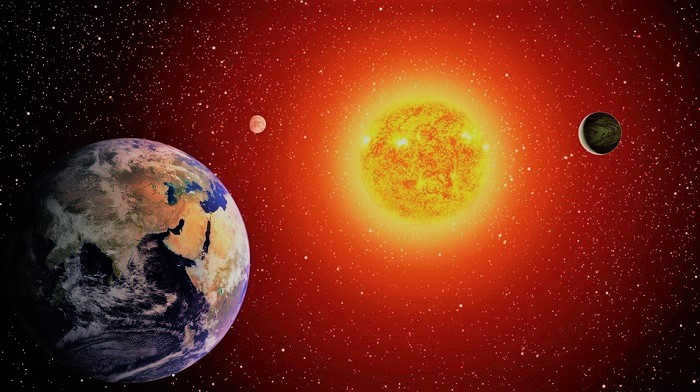
Uncovering the Earth’s Orbital Path
If we harken back to ancient times, the prevailing belief was in the geocentric model of the Universe. This theory maintained that the Earth stood as the central point of all celestial bodies, with everything else revolving around it.
However, this perspective was eventually replaced by the heliocentric view. This new understanding posited the Sun as the focal point, with all cosmic bodies orbiting around it.
Furthermore, heliocentrism provided an explanation for the movement of the planets within the solar system. It was previously believed that their orbits were circular in shape, but careful observation revealed otherwise. As a result, scientists began to employ the concept of the sphere in defining these orbital paths.
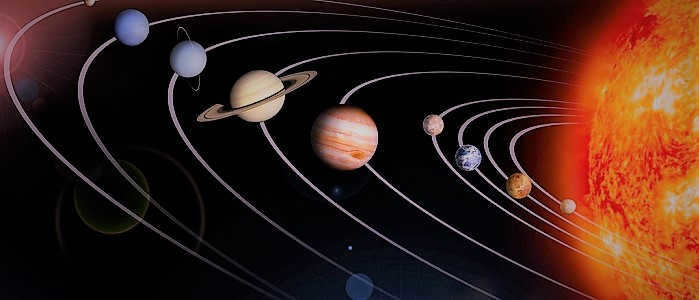
It is important to mention that numerous distinguished scientists have dedicated their efforts to studying the structure of the universe. Notable figures such as Ptolemy, Plato, and Aristotle have contributed to this field. Furthermore, Nicolaus Copernicus played a significant role in advancing the theory of heliocentrism, which led to a deeper understanding of the Earth’s orbit.

What does the Earth’s orbit look like?
As we now understand, the Earth follows a specific path as it revolves around the Sun. But what exactly is this path?
Johannes Kepler discovered that the planets actually move in an elliptical shape, including our own Earth. This is quite different from the previous belief that the path was a perfect circle.
An elliptical orbit is essentially a stretched-out circle, and it also has a measure of eccentricity. The eccentricity determines how much the shape deviates from a perfect circle. It can range from 0 to 1, with 0 representing a perfectly circular shape with the star at the center, and 1 representing a highly elongated shape.
For our planet, this eccentricity value is 0.0167. In other words, the Earth’s orbit closely resembles a slightly elongated circle.
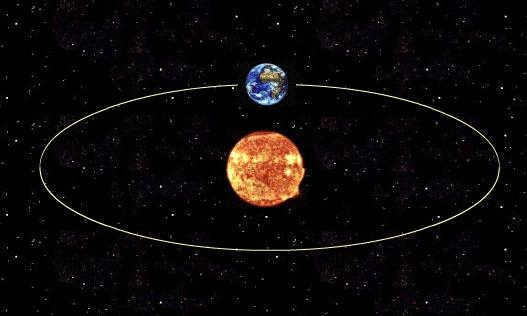
Furthermore, when considering the orbital properties, a crucial aspect to consider is the distance between the celestial body and its primary luminary. To facilitate this assessment, specific points on the astronomical object’s orbit have been identified:
- apocenter – the point at which the body is farthest from its luminary;
- pericenter – the point closest to the central luminary.
Characteristics of the Earth’s orbit
On the flip side, the Earth’s orbit is defined by its aphelion, which is the point at which it is farthest from the Sun, and its perihelion, which is the point at which it is closest to the Sun. At aphelion, the Earth is approximately 152 million km away from the Sun, while at perihelion it is approximately 147 million km away. However, the average distance between the Earth and the Sun is generally considered to be around 149.6 million km.
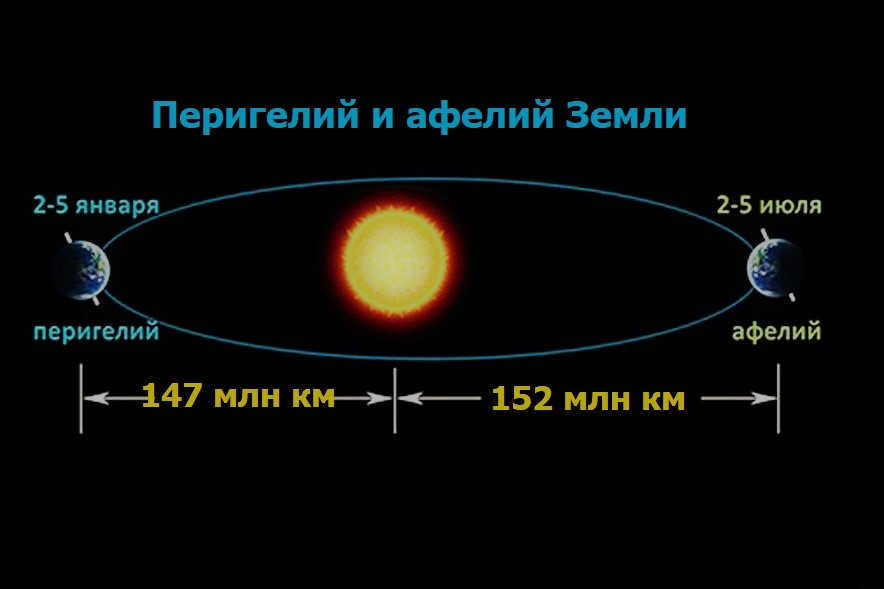

In fact, any slight alteration in the circular path of the Earth has a significant impact on the planet’s existence as it affects the temperature maintained on it.
By the way, the average distance between the Earth and its orbit (150 million kilometers) is known as one astronomical unit, which is the unit of measurement for distances in space.
Presently, it has been determined that the Earth rotates around its main star at a speed of 108,000 km per hour. Hence, it takes 365 days for the planet to complete one revolution, or 365.242199 days to be precise. Consequently, every four years, an additional day is added to our calendar.

As mentioned before, the position of our planet’s orbit is greatly impacted by the inclination of its axis. This is what causes the variations in weather throughout the year, known as the seasons. The solstice and equinox occur as a result of the Earth’s axis rotation.
The plane of the orbit
Flat shapes are used to describe the paths of cosmic objects in space, as all points of their movement are situated on the same plane. The plane that the Earth follows in its orbit is known as the ecliptic. In fact, all the planets in our solar system have orbits that are similarly positioned.
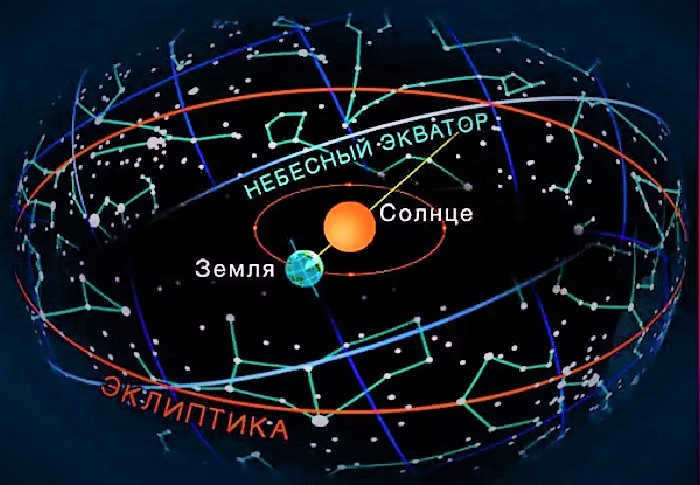
The Earth’s axis of rotation is tilted at a 230 degree angle in relation to the ecliptic. As a result, the heating of the Earth’s hemispheres varies, leading to different weather patterns throughout the seasons.
Living on Earth may be costly, but you receive a complimentary annual cruise around the Sun.
Ashley Diamond
The study and exploration of the Earth is an ongoing process, likely due to the constant motion of our planet. However, this motion is not constant and can vary over time.
According to Kepler’s laws, celestial bodies have the ability to orbit a central star throughout their lifespan. However, there can be deviations in their orbital paths. As a result, scientists propose various scenarios for when and how planets can deviate from their typical orbits.
Currently, computer simulation is employed to forecast such occurrences. The outcome encompasses multiple potential futures for our solar system. Ultimately, only time will reveal the course of events.
An orbit refers to the trajectory of a celestial body in space. This notion can be applied to describe the path of any object, although it commonly refers to the motion trajectory of interacting bodies. Instances of this include the orbits of planets, satellites, and stars within systems.
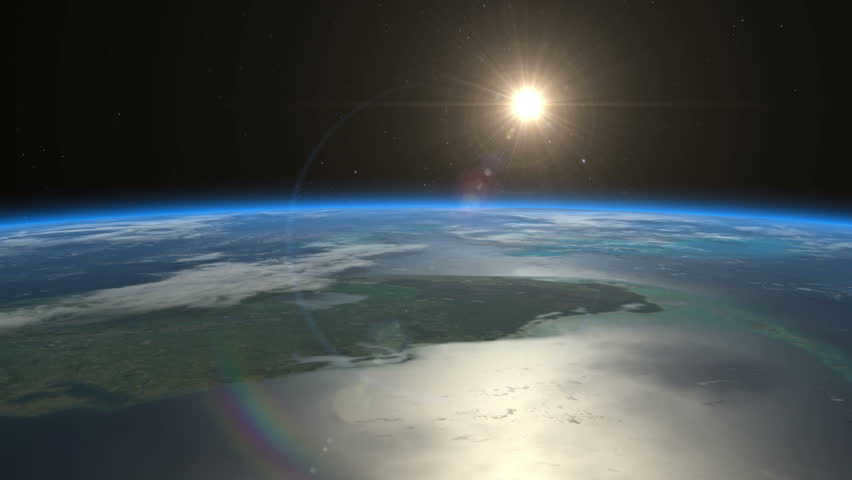
Various Kinds of Orbits
Orbits can be categorized into two groups: relative and absolute.
An absolute orbit refers to the trajectory of an object in a well-defined frame of reference that is universally recognized. The entire Universe serves as an example of such a system.
A relative orbit refers to the curved path with changing speed that a body follows in a given frame of reference. For instance, when discussing the path of a man-made satellite, we indicate its movement relative to the planet. In a basic approximation, this movement takes the form of an ellipse, with the Earth as the focal point, while the plane of the satellite’s movement is considered fixed relative to the stars. In this scenario, it becomes evident that the trajectory of the satellite’s movement is a relative orbit, as it is defined in relation to our Blue Planet, which itself revolves around the Sun. Conversely, if we examine the trajectory of the satellite’s movement with respect to the stars, we observe a spiral-shaped path – an absolute orbit of the man-made satellite.
Understanding the distinction between an absolute orbit and a relative orbit is crucial for performing trajectory calculations based on Newton’s laws. While absolute orbits are necessary for precise calculations, we typically observe and analyze relative motion in our day-to-day observations.
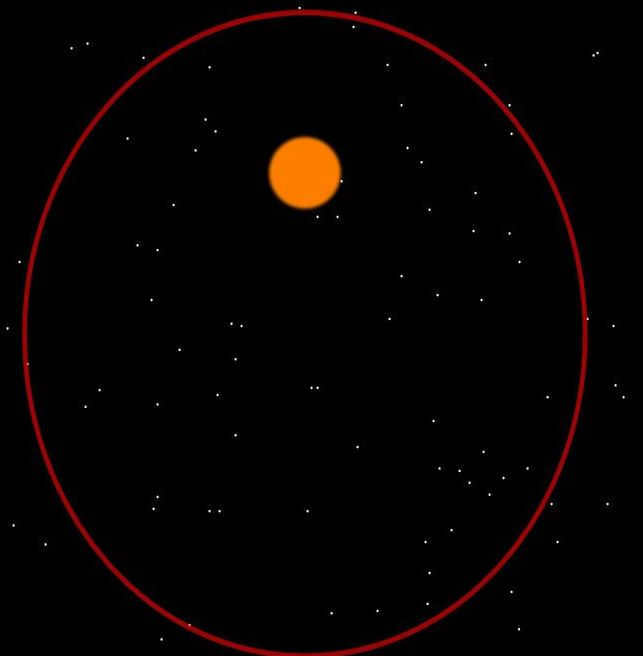
Sun’s Movement
The Sun’s movement within the Universe follows the same path as the Earth’s orbit. As the cosmic sphere intersects with the orbit, it creates a vast circle known as the ecliptic. The equatorial and ecliptic planes intersect at a specific angle, determining the points of the vernal and autumnal equinoxes. The Sun passes through these points twice a year, as it transitions from the northern hemisphere to the southern hemisphere and vice versa.
Earth’s Path around the Sun
The path that our planet takes as it revolves around the Sun is not a perfect circle, but rather an elliptical shape. The distance between the Earth and the Sun varies throughout the year, ranging from 147 million kilometers to 152 million kilometers. In total, the Earth travels a whopping 930 million kilometers along its orbit. As it moves, the Earth travels from west to east at a speed of approximately 30 kilometers per second. It completes its entire orbit in 365 days, 6 hours, 9 minutes, and 9 seconds, which is known as a sidereal year.
Additionally, there is another concept known as a tropical year, which measures the time it takes for the Sun to move through the point of the vernal equinox. This time interval is slightly shorter than a sidereal year, equaling 365 days, 5 hours, 48 minutes, and 46 seconds.
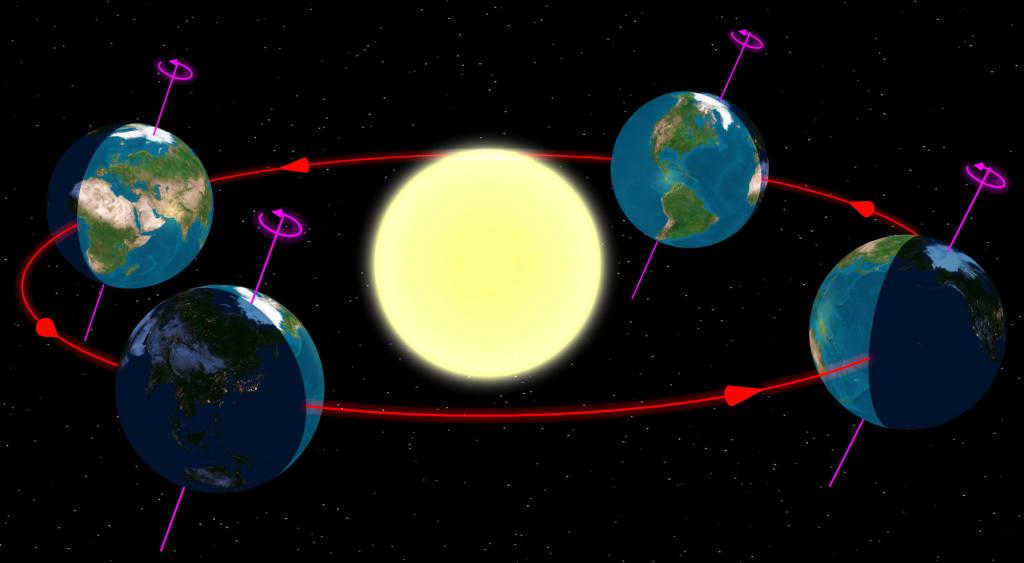
Timetable
The Gregorian schedule is utilized by individuals to monitor time, adjusted to the length of the tropical year with a slight deviation. Accordingly, even in fifty thousand years, winter will happen during the winter months and summer during the summer months.
At present, the Earth’s axis is tilted at an angle of 66.5 degrees to the orbital plane. The planet moves for 365 days in parallel to itself in outer space. As a result of the Earth’s movement around the luminary, the seasons change and the length of day and night vary.
Because of the Earth’s axial tilt relative to its orbital plane, the planet’s position in space remains constant. This also impacts the varying angles at which the sun’s rays strike the Earth’s surface.
During the summer solstice, the planet’s axis is inclined towards the north, facing our radiant star. Conversely, during the winter solstice, it is inclined towards the Sun from the southern hemisphere.
Elliptical orbit
Considering the duration of day and night and the Sun’s positions at different points, scientists have determined that our planet does not move in a circular path, but rather in an elliptical orbit. This discovery was first made by Kepler, who also calculated periodic accelerations and decelerations of Mars and Earth. Through careful observation and calculation, he concluded that the planet’s movement is not circular, but rather elliptical in nature.
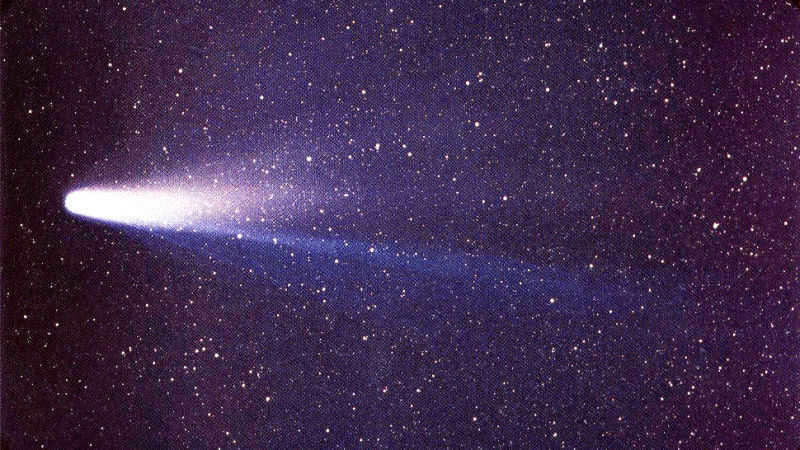
Movement of Celestial Bodies in Space
Scientists have been able to describe the trajectories of various celestial bodies by understanding the concept of orbits. Comets, satellites, planets, and stars all follow elongated paths in their motion. For instance, there are comets with highly elongated trajectories that can intersect with a planet’s orbit. If the planet and the comet align in their paths at a certain point, there can be a collision or the comet’s orbit can be altered by gravitational forces, causing it to become “trapped” in its own orbit. This is believed to be how cometary rings around planets and satellites are formed, according to scientists.
The path of the Sun
The Sun’s journey through the vast expanse of the Universe follows a specific route known as the Galactic orbit. In relation to the surrounding stars, our radiant celestial body soars through space at an impressive speed of 19 km/s, heading towards the constellation of Hercules. According to scientific estimates, it takes approximately 230 million years for the Sun to complete a full revolution around the central core of the Milky Way galaxy. This orbital movement is a complex dance influenced by various factors, including the gravitational pull of massive cosmic bodies, the gravitational interactions with other stars, and the presence of interstellar gas.
The Earth’s celestial path is the remarkable journey our planet embarks on as it revolves around its guiding star, the Sun. This regular and cyclical motion traces an almost perfectly circular elliptical path, with the duration of one complete revolution corresponding to a stellar year, a period slightly longer than 365 days. In conjunction with the tilt of the Earth’s axis, this orbital path plays a crucial role in dictating the annual cycle of the seasons that we experience on our planet.
The orbit of the Earth falls within the habitable zone of the solar system, allowing for the presence of liquid water on its surface. However, over thousands of years, there are periodic changes in certain parameters of the Earth’s orbit and axial rotation, resulting in extended periods of glaciation on the planet.
Starting from the 17th century, the Earth’s orbit has served as a reference for various standards and criteria, including the duration of a year, the length of an astronomical unit, the value of parsecs, and the plan of the ecliptic.
Rephrased Summary
Historical
Throughout history, there have been various models that have attempted to depict the position of Earth in the universe. The concept of Earth being capable of movement and orbiting the Sun is relatively new and has only gained acceptance in the past few centuries. This is known as heliocentrism, where the Sun is situated at the center and the planets revolve around it, forming the solar system.
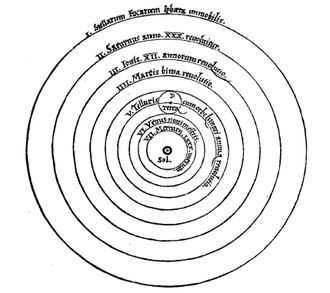
The simplified heliocentric system of Copernicus is taken from Des Revolutions des Spheres celestes. (1543).
Geocentrism, which positioned the Earth as the central point of the universe with the entire sky orbiting around it, was the prevailing belief before the emergence of heliocentrism. Ptolemy’s Almagest, published in the second century, served as a fundamental reference on this topic for over a millennium. While heliocentric concepts had been proposed in ancient times, it wasn’t until the 16th century that they gained serious consideration with the publication of Nicolaus Copernicus’ On the Circulation of the Celestial Spheres (1543), which sparked the Copernican revolution. Due to the circular nature of the orbits, which didn’t offer improved accuracy in observations compared to the geocentric model, and the influence of religious authorities at the time, it took more than a century for heliocentrism to gain traction in the Western world.
Physical characteristics
| Revolution period | 365.256 363 004 days |
| Average velocity | 29.78 km/s 107,208 km/h |
The Earth completes a full revolution every 365.256 363 004 days, which is equivalent to a stellar year. The orbital velocity of the Earth varies between 29.29 km/s and 30.29 km/s, with an average speed of 29.78 km/s (or approximately 107,200 km/h). This speed allows the Earth to traverse its diameter of 12,700 km in just seven minutes or cover the distance between the Earth and the Moon (~384,000 km) in less than four hours.
From the perspective of the Earth’s northern poles and the Sun, the Earth spins counterclockwise in its orbit and around its axis, just like the Sun spins counterclockwise around its axis from this perspective. This path takes the shape of an ellipse with an eccentricity of approximately 0.0167. As a result, the Earth’s orbit is not a perfect circle with the Sun at the center. The Sun is significantly displaced in phase at one of the foci of the ellipse.
The following diagram illustrates the relationship between the solstice line, the equinox line, and the apsidal line of the Earth’s orbit. Perihelion occurs between January 2 and January 5, while aphelion occurs between July 3 and July 5. The solstices take place between June 20-21 and December 21-22, and the equinoxes occur between March 19-21 and September 22-23.
In the long run, the Earth’s orbit experiences instability due to the gravitational interaction between celestial bodies. This interaction causes the ecliptic to shift by approximately 119 centimeters (47 inches) per century.
Potential Future Scenarios
Mathematicians and astronomers, including Laplace, Lagrange, Gauss, Poincaré, Kolmogorov, Vladimir Arnold, and Jürgen Moser, have attempted to prove the stability of planetary motion. Their efforts have led to various mathematical advancements that demonstrate a certain level of stability in the planetary orbits of the solar system. However, this issue can be likened to the N-body problem, which currently lacks an exact solution.
However, a research conducted by Jacques Laskar and published in 1989 indicates that the solar system, specifically the inner solar system consisting of Mercury, Venus, Earth, and Mars, experiences chaotic behavior over a span of several tens of millions of years. This chaos is characterized by a Lyapunov timescale estimated at 5 million years.
Notes and references
(fr) This article is partially or entirely based on the English Wikipedia article titled “Earth’s orbit”. ( see authors list ) .
- ↑ The cited book provides -11.26064 degrees, which is equivalent to 348.73936 degrees.
- ↑ The cited book provides the perihelion longitude, which is the sum of the longitude of the ascending node and the perihelion argument. Thus, 114.20783 degrees + (-11.26064 degrees) = 102.94719 degrees.
- ↑ a and bOrbit, Earth’s unique journey: the trajectory of 2012 .
- ↑ (in) Walter Bryant Pioneers of progress: men of science , S. Chapman 1920 . ( online presentation , online reading ) , “Kepler” .
- ↑ abc and d (ru) David R. Williams, ” Earth Fact Sheet ” , NASA , September 1, 2004 .
- ↑ a and b (in) Astronomical Algorithms , Willmann-Bell, 1991. , 429 с. ( online presentation ) ,?
- ↑ a and b (in) Standish, Myles E . ; Williams, James C., ” Orbital ephemerides of the Sun, Moon, and planets ” ( Archive – Wikiwix – Archive.is – Archive.is – Google – What to do? ) [PDF] , Commission 4 of the International Astronomical Union: (Ephemerides)
- ↑ (in) David J. Tholen, Victor G. Teufel, and Arthur N. Cox, Allen Astrophysical Magnitudes , Springer Science & Business Media, 2000. , 719 с. ( ISBN0-387-98746-0 , online presentation , read online ) , ch. 12 (“Planets and Satellites”) , p. 294
- (in) J. Laskar, Encyclopedia of astronomy and astrophysics, Bristol, Institute of Physics Press, 2001. (read online), “The stability of the solar system”
- (in) John Gribbin, Deep Simplicity: Bringing Order to Chaos and Complexity, New York, Random House, 2004, 1st ed., 275 p. (ISBN 978-1-4000-6256-0, online presentation)
- Jacques Lascar, “Is the Solar System Stable?”, Poincaré Seminar XIV, 2010, pp. 221-246 (read online)
Mediography
: the document utilized as a primary source for this article.
- BBC reports that have been translated and broadcasted on the television program Découverte in Canada:
- Orbit, Earth's extraordinary journey: trajectory, (Flash Player) [Television], presented by Charles Tisser (October 7, 2012) United Kingdom, Canada: BBC / Discovery Channel, Société Radio-Canada. Accessed November 2014.
- Orbit, Earth's extraordinary journey: rotation, (Flash Player) [Television production], presented by Charles Tisser (October 14, 2012) United Kingdom, Canada: BBC / Discovery Channel, Société Radio-Canada. Accessed Nov 2014.




